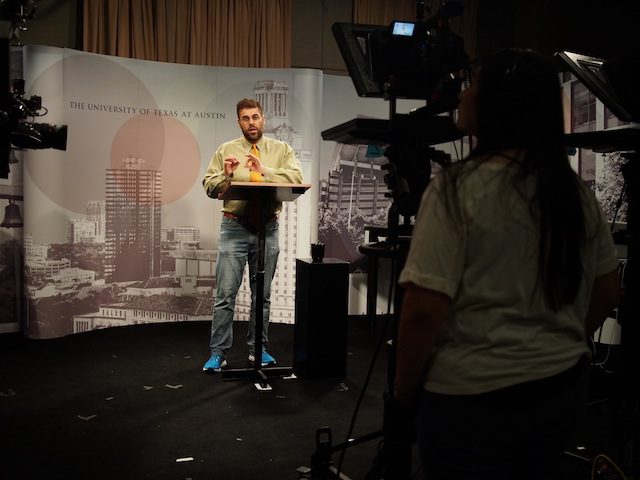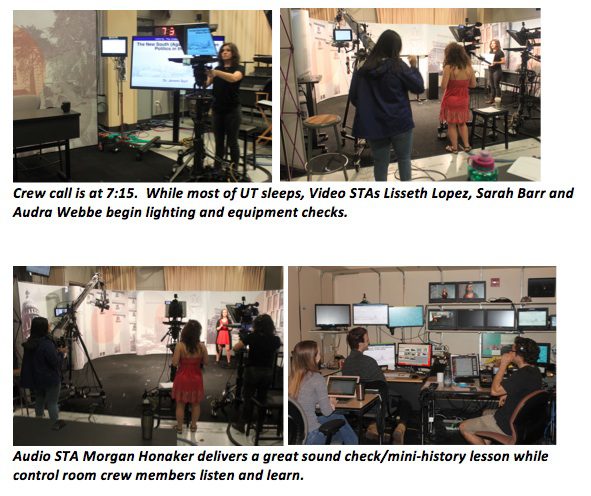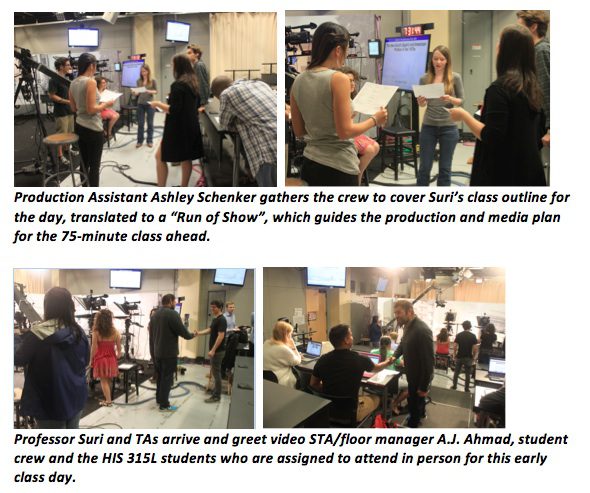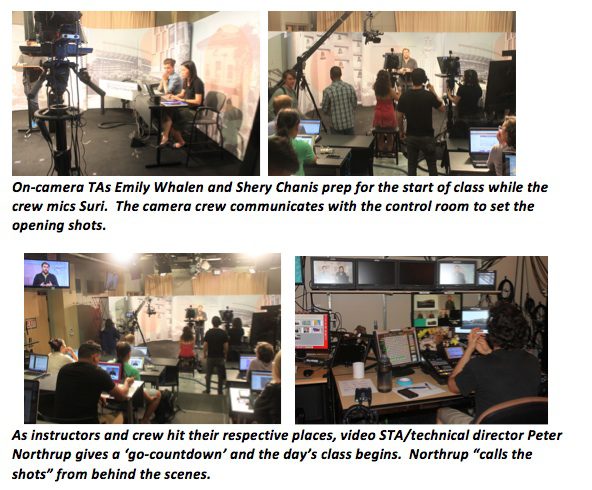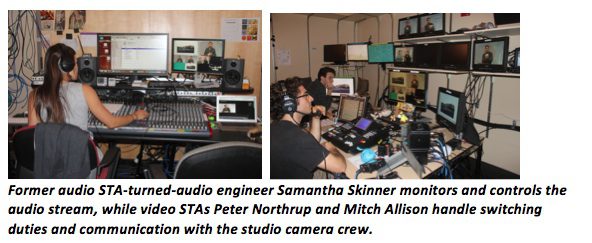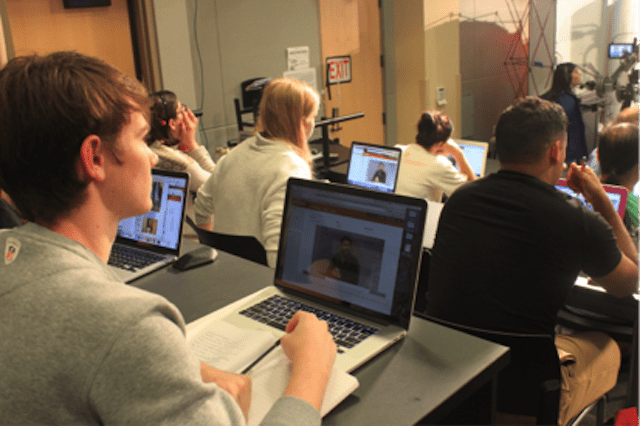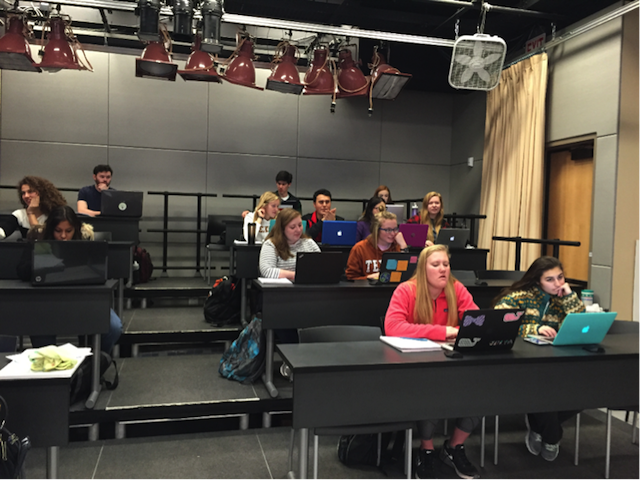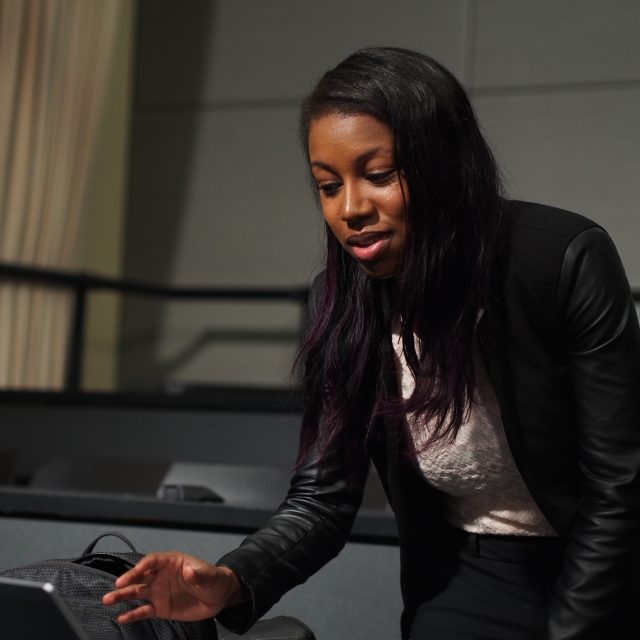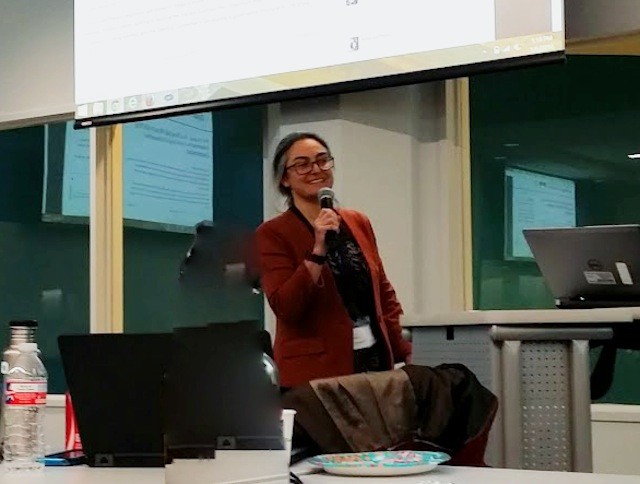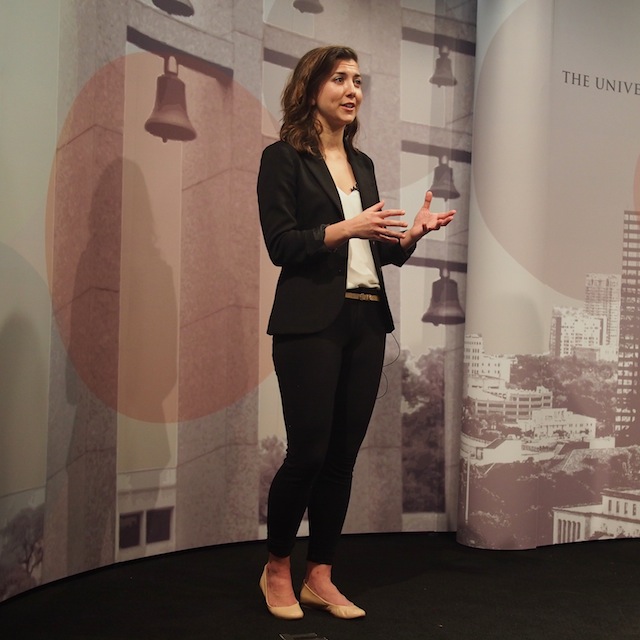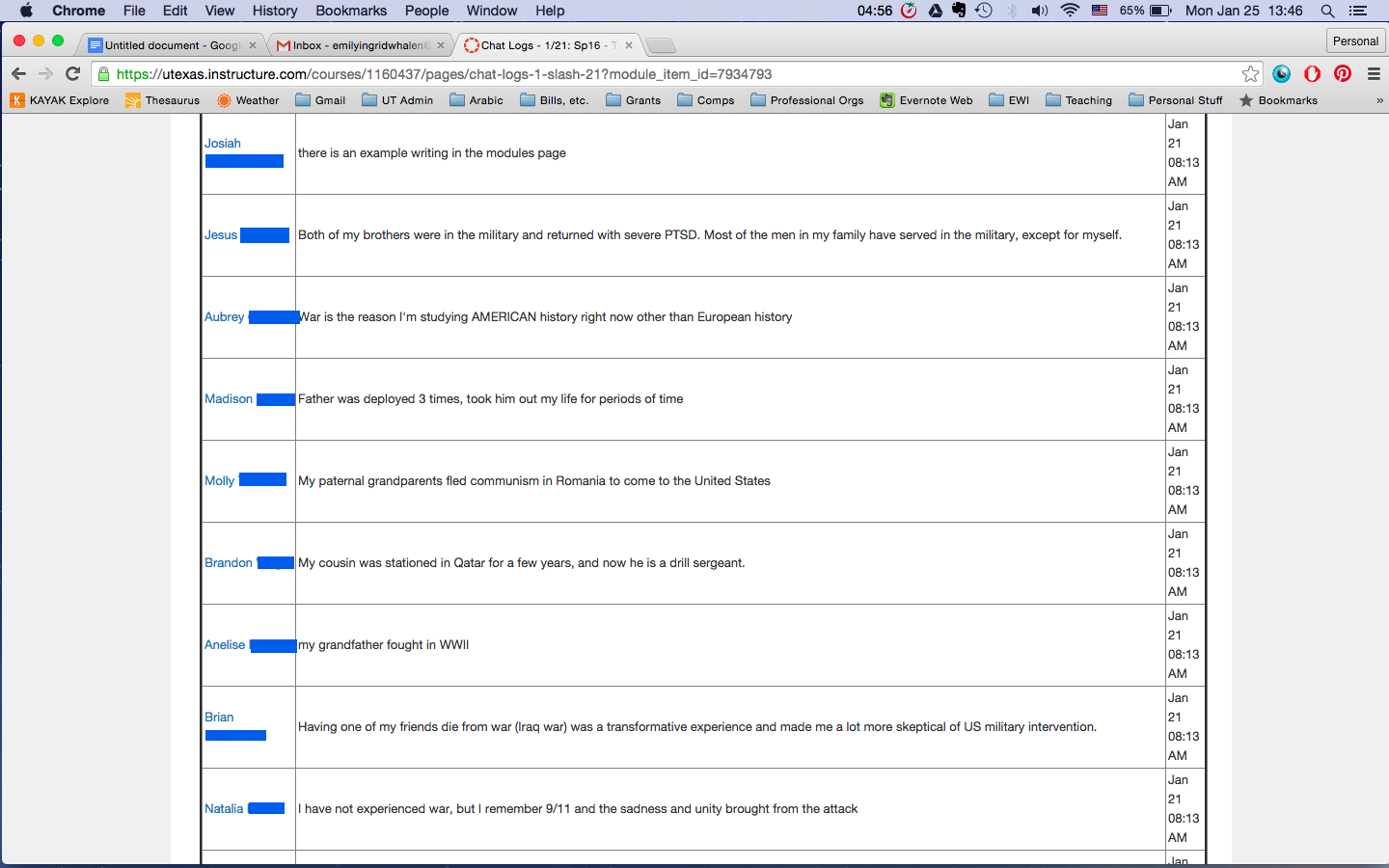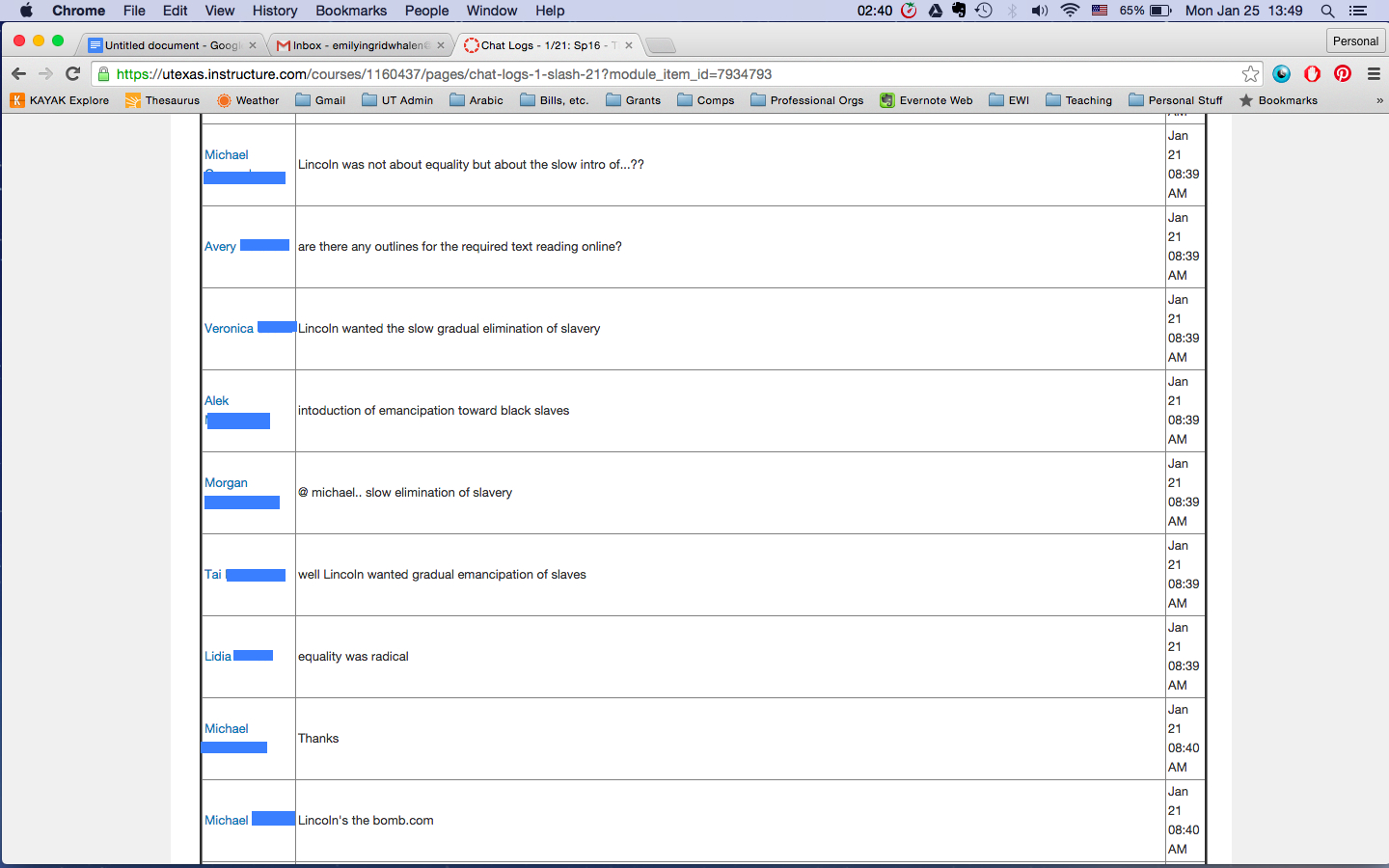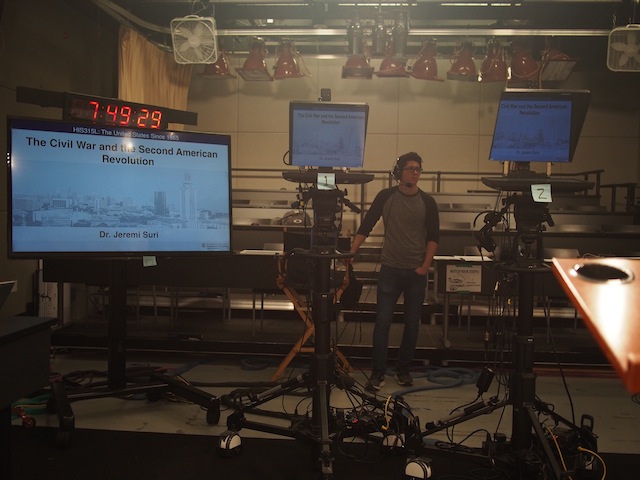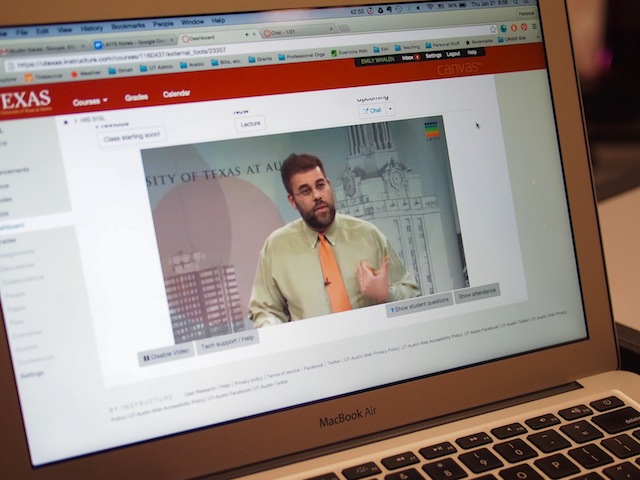Every year thousands of students take introductory courses in U.S. History at UT Austin. This spring Prof Jeremi Suri is experimenting with an online version of the U.S. History since 1865 survey course. He and his teaching assistants, Cali Slair, Carl Forsberg, Shery Chanis, and Emily Whalen will blog about the experience of digital teaching for readers of Not Even Past.
By Emily Whalen
A good presentation, like a good lecture, should look effortless. Whether it’s a Youtube tutorial, a formal debate, or an academic job talk, practiced presenters know that seamless public speaking requires planning and practice. History courses focus mostly on reading and writing skills–vitally important in a world where remedial writing classes cost businesses an estimated $3.1 billion a year. Because of time restraints and high enrollment in general survey courses, some undergraduates won’t ever need to craft a formal presentation for a grade. In a world where presentation is a critical element of success, why don’t we prioritize public speaking?
When we began planning for our new online course, we were looking for ways that the online format could not only meet the standards of a traditional class, but exceed them. We wanted to raise the bar for what we expected of our students, all while preparing them in tangible ways for life beyond college. That was when Dr. Suri came up with the idea of having students record a short verbal presentation based on one of the class’s assigned essays. Students would have already done the intellectual work–analyzing a primary document–but would need to use time management and organization skills to turn the essay into a 2-minute speech. They would get a sense of the work that goes into the lectures they see every week, and gain important insights into how to present themselves in a formal manner. And, given the online format, we could download and view the presentations on our own time for grading – without sacrificing valuable lecture time.
We had already written this exciting idea into the syllabus when we learned about the Sanger Learning Center’s new Public Speaking Center. There, students could schedule one-on-one appointments with student speech consultants to hone and polish their presentations. The Public Speaking Center even reserved a block of time specifically for our students to come in and take advantage of this wonderful service. It was also a fantastic way to showcase for students some of the fantastic supplemental resources available to them as members of the UT community! We had 89 students sign up for the Public Speaking Center’s appointments. This participation shows how an online class can encourage students to use on-campus resources.
The positive effects are clear. We’ve enjoyed watching and grading some truly outstanding presentations, like this creative submission from freshman Janessa Lynch.
[jwplayer mediaid=”12812″]
Response to the assignment has been generally positive, and the videos have been a great way for us to see a different side of our students–and for them to participate in our historical-technological experiment.
